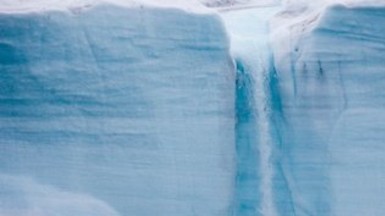Your podcast discovery platform
Curious minds select the most fascinating podcasts from around the world. Discover hand-piqd audio recommendations on your favorite topics.

piqer for: Climate and Environment Global finds
Andrea is a writer and researcher based out of Chicago. Andrea has a Bachelor's degree in environmental science from The Ohio State University and a Master's in Environmental Planning and Management at National Taiwan University, where she specialized in climate adaptation and urbanization. She writes for TaiwaneseAmerican.org, and sends out a biweekly newsletter which includes articles on politics, environment, identity, and intersections of race, class, and gender (http://eepurl.com/bPv-F5).
How DNA Could Unlock The Mysteries Of Melting Glaciers And Ice Sheets
How do scientists track glacial melting? "Hydrologists and glaciologists have traditionally used fluorescent dyes, or salts such as sodium chloride, to track water systems including melting ice." But there are not a large number of unique tracing dyes or salts, so they can often get mixed up with previous measurements if used over and over. Scientists needed a better way, particularly one that did not require long wait times between experiments. One new method seems particularly promising.
Dahlke and her team from U.C. Davis and Cornell University realized that they could make distinctive tracers—with DNA. “Using DNA, you have so many different combinations of the base pairs that you can really make millions of different tracers, and each one has a unique identifier,” Dahlke explains. “You can apply hundreds at the same time, and you can still distinguish them in time and space.” Dahlke is a researcher in integrated hydrology. Her team developed different DNA markers to put in their tracers, and they use them to track water from different sources or to map flows. It is unclear how the melt is happening and where the water goes, and finding the answers can often be dangerous fieldwork. But with DNA tracers, this can become safer, and used more frequently than the traditional dyes and salts.
"The tracers contain unique codes, researchers would not have to wait to inject them as they have to with traditional tracers. This could help cut down on time and resources needed for an experiment, and could give glaciologists more accurate information. “Glaciers evolve over a melt season,” Dahlke says, adding that if researchers can drop their tracers over a shorter period of time, they will get more consistent data about how a glacial system works." So far they've been used in Sweden, and various parts of the US by Dahlke's team. Time is running out on finding out how water moves as glaciers melt, and so this new method is a key development in the field.
Stay up to date – with a newsletter from your channel on Climate and Environment.
